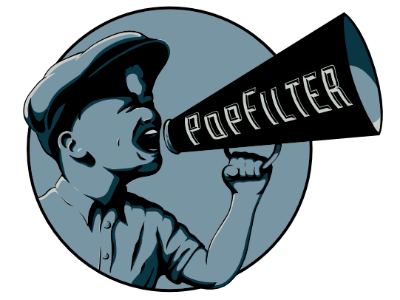Wake n Bake
WAKE N BAKE
In which Erin informs you of the best movies to blaze to
Absurd comedies are usually my go-to movies for a kushy night. But it wouldn’t be a stoner column if I didn’t pull out the weird shit once in a while. So I present to you, from France, Sans Soleil, a 1983 film by Chris Marker, who also made the required-viewing-for-film-school classic La Jetée.
This documentary, or… whatever, is a compilation of travel videography, stock footage, and a narrator who reads transcripts of the director’s rich interior life. These travel diaries describe his experiences that take place primarily in Guinea-Bissau and Tokyo. I won’t even try to misrepresent it, there’s a fair bit of intellectual wankery going on. It’s the sort of film that cinema students aren’t supposed to admit that they don’t like. All things considered, I can’t say that I do, and I’d like to think of myself as reasonably well educated, and not at all anti-intellectual. In fact, I used to be into this type of thing, until one day I got the sneaking suspicion that the director had Tom Sawyered me into scraping his belly button clean. Being a navel-gazer is one thing, but tasking the viewer with your own navel is quite another. I didn’t much appreciate it, but, you know, fool me once and all that. But I still contend that it’s perfectly okay to practice (or witness the fruits of) the contemplative arts one in a while. Even if it doesn’t “accomplish†anything in the traditional sense of the word, it’s healthy. And, on the right evening, this type of movie and the perfect bud will enhance each other. Marker’s writings will satisfy your brain munchies. He provides a lot of philosophical quandaries for the baker to ponder such as, “Do we ever know where history is really made?†and “If the images of the present don’t change, then change the images of the past.†Y’know, concepts to which a sober person would react with:

But a high person?

I’m not kidding, these musings have a strong appeal to certain stoned people. (I’m pretty sure I’ve had similar conversations myself while under the influence, not that I was nearly as articulate as I felt at the time.) But that’s not the film’s only value. The footage (and a healthy dose of Indica) will glue you to the screen–a lot of it features parades with costumes and dancing, which I could zone out to for hours, stoned or not. There’s footage of people on trains; some of them are asleep, others are waking up to discover a stranger filming them. (They’re pretty damned gracious about it in the film, but it makes me wonder what the deleted scenes are like.) There are a few segments in which video images are given a hologram treatment, shapes generalized and colors separating before bleeding away, quite similar to the only part of 2001: A Space Odyssey that anyone cares about. And they did it before it was cool.
Also: Cock Museum? WHY YES. SO MANY STATUES OF COCKS. Not statues of people with exposed cocks, mind you. Just detached, orphaned cocks. Giant ones. Everywhere. And taxidermy animals posed in various states of erotic embrace. Marker’s thoughts on this, though copious, bring us no closer to understanding the impetus behind this strange bestiary. Although maybe that’s all for the best.
“But Erin, this film is so mentally involving. What if I have to go to the bathroom/get more snacks/talk to my mom for some reason and I’m too high to remember to hit pause? How will I make sense of whatever’s happening after missing a scene?†Well, if you’re too high to handle the remote control, I don’t understand how you could possibly be awake. But if you’ve somehow managed this, fear not! The acrobatic progression of ideas in Sans Soleil presents an unexpected benefit for the stoner: you are released from any obligation to remember or make sense of the content. So feel free to let your mind wander. You won’t be confused later, because you’ll be confused the whole time.
(If you’re the sensitive type who doesn’t like to have her buzz ruined, consider yourself warned: as soon as you see stock footage of a giraffe running about halfway through the film, close your eyes and don’t open them until the narrator starts talking again. I’ll describe the violent scene so that you don’t feel compelled to peek. A giraffe falls after being shot. He gets back up, only to be shot again. The bullet makes it through the other side of his chest, and blood gushes almost comically from either side. He continues running until he can’t, and falls again, this time for good. He looks calmly up at the man who steps into frame to shoot the giraffe in the head. The body is not gathered for human consumption, or even to be stuffed as a sick trophy of brutality. It is simply left there, and vultures rip out his eyeball. I make no excuses for this footage. It is miserable, ugly, depraved.)
It’s possible that some cinephiles project more onto this film than the director ever had in mind. After all, it’s only a thoughtful account of his travels, and maybe he thinks it’s strange that anyone ever tried to make it into more than that. The only thing that jumps out as painfully affected is that the director/writer has his travelogues read by a narrator as though they were letters from a fictional person. He separates his own reality from that of the film. Because to admit that the letters were his own would be to admit there is no film. There is no viewer. Or something. Here. Maybe Abed can explain it a little better.


